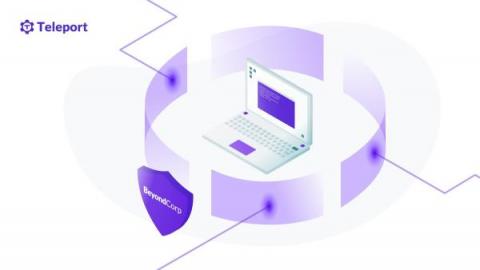Security | Threat Detection | Cyberattacks | DevSecOps | Compliance
Security
BeyondCorp, Federal Zero Trust Architecture Strategy and Teleport
"Crunchy on the outside, chewy in the middle". That's how Google described its perimeter-based security targeted high-profile companies such as Google, Adobe, Akamai, Rackspace, etc., with said primary reason of modifying the source codes. In response, Google initiated a perimeter-less and trustless access control system now popularly known as BeyondCorp. BeyondCorp comes from a realization that VPN perimeter network security is obsolete.
How Cybercriminals Operate Online
How Advanced Technology Can Help Detect Indecent Images Online
Cybersecurity Risk Assessments: A Comprehensive Guide
On average, 55 new cybersecurity vulnerabilities were published every day in 2021. This goes on to show that preparing for every single vulnerability and running a hundred percent risk-free business is an extremely difficult task, but not entirely impossible.
Third party Cybersecurity risks in securing the supply chain
Some of the biggest prevailing challenges in the cybersecurity world over the last year have been those revolving around securing the software supply chain across the enterprise. The software that enterprises build for internal use and external consumption by their customers is increasingly made up of third-party components and code that can put applications at risk if they aren't properly secured.
Unveiling the Bank Security Secrets: How CIAM and Identity Verification enable seamless Onboarding
Due to the importance of its data, frequent audits, and the fines and financial implications of fraud, the banking and financial services sector is subject to some of the most stringent rules and monitoring in existence today. Technology platforms, procedures, and policies that guarantee your organization’s compliance and security are essential to keeping ahead in the banking industry in the digital era.
4 Reasons Why SMBs Need To Prioritize Cybersecurity
As a cybersecurity evangelist, I’m constantly exposed to contrasting perspectives on the significance of IT Security projects. Although companies of all shapes and sizes have become more vigilant about cyber protection, it’s fairly commonplace for SMBs to think, ”We’re too small to be of interest to cyberattackers.” Nothing could be further from the truth.
Stranger Danger: Your JavaScript Attack Surface Just Got Bigger
Cybersecurity investment tops budget priorities for 66% of CIOs
Global IT spending will reach $4.5 trillion this year, according to Gartner's latest forecast. While the economic climate is negatively impacting consumer markets, companies have reordered their priorities and continue to increase spending on digital business initiatives, despite the global economic slowdown. IT budgets started to rise in the third quarter of 2022 when Gartner reported that 76% of CIOs stated that their budgets had grown compared to the previous quarter.











